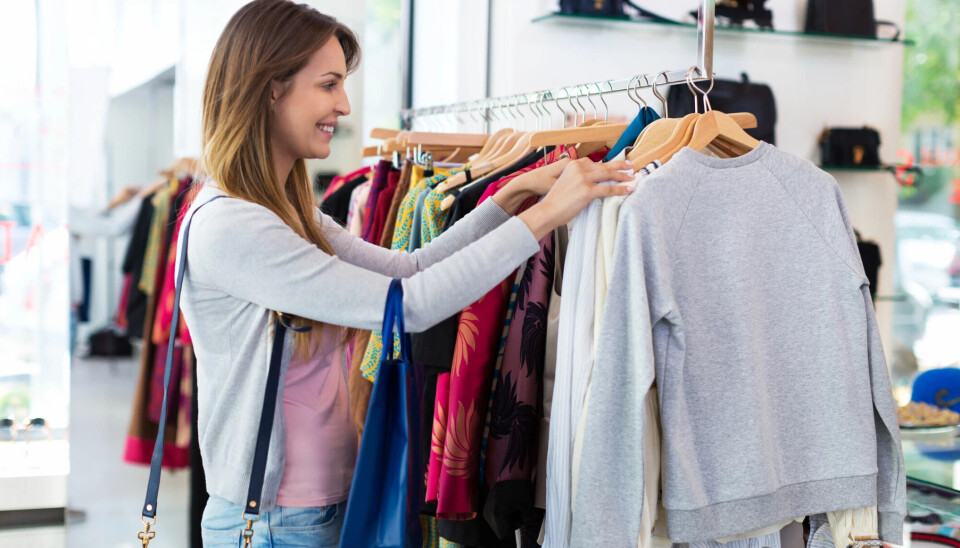
Norwegians buy 50 per cent more clothes and shoes than the average European
Norway is once again nearly at the top in consumption in Europe. Consumers need help to make sustainable choices when shopping for clothes and shoes says researcher.
For all goods, Norway's consumption was 26 per cent higher than the average EU citizen in 2022.
In neighbouring countries Sweden, Denmark, and Finland, people shopped around 10 per cent more than the average.
Only Luxembourg surpassed Norway in consumption. Personal consumption there was 38 per cent above the European average.
Albania had the lowest consumption per capita. Personal consumption there was 40 per cent lower than among other Europeans.
These are new figures from Statistics Norway (link in Norwegian).
Far more clothes and shoes
When we look at specific areas in the statistics, Norway stands out significantly from the European average in some areas.
Norwegians buy far more clothes and shoes. The consumption in this category is over 50 per cent above the EU average. The same goes for furniture.
Only alcohol and tobacco, postal and telecommunications services, and hotels and restaurants are where Norweigans spend less money than the average European consumer.
Increased demand after the pandemic
The increase seen in consumption in recent years can partly be explained by a rebound from the pandemic, Harald Throne-Holst believes. He is a consumer researcher at the SIFO research institute.
“There were many social occasions that disappeared during the Covid-19 pandemic but came back in full force afterwards. This may have contributed to the increased demand for goods like clothes and shoes,” he believes.
In recent years, there has also been a drastic drop in prices for some clothes. This can also help explain why Norwegians buy more than they need, he suggests.
Sustainability is challenging
Despite increased awareness of sustainability in Norway in recent years, it does not seem to have significantly influenced shopping habits.
Especially when it comes to clothes and shoes.
Throne-Holst believes that this is partly because consumers find it very difficult to navigate the sustainability landscape.
What constitutes good and sustainable choices regarding clothes and shoes is not entirely obvious, research from SIFO shows (link in Norwegian).
It is easy to get lost in the many different labeling schemes, according to the consumer researcher.
“For example, information stating that it took 10 or 50 litres of water to produce a T-shirt is very difficult for most people to relate to. Is this a lot or a little?” he says.
Consumers need assistance
Consumers need help navigating the jungle of labels, he believes.
In interviews with the researchers, they express the desire for authorities, manufacturers, and retailers to address this issue.
In many cases, they do not understand why they should have to choose between sustainable and non-sustainable products. The study shows that they want more guidance and regulation.
What happens next?
Throne-Holst believes that consumption will decrease in Norway this year.
New research from SIFO shows that almost three times as many Norwegians are struggling financially.
“I think people will become more cautious with their money after the interest rate hikes and the recent price increases in food and electricity. Therefore, I don’t expect to see a further increase in consumption next year,” he says.
But Throne-Holst is quite certain that Norway will still rank high in consumption compared to other countries.
There is a high price level in Norway, but we also have a high wage level compared to the European, he reminds us.
High price level
Despite being among the highest consumers in Europe, Norway was also among the countries that paid the most for the goods bought in 2022.
Norway was the fifth most expensive country in Europe, a whopping 43 per cent more expensive than the European average, according to Statistics Norway.
The wealth paradise Switzerland topped the list. On average, it was 74 per cent more expensive to live there.
———
Translated by Alette Bjordal Gjellesvik.
Read the Norwegian version of this article on forskning.no





































